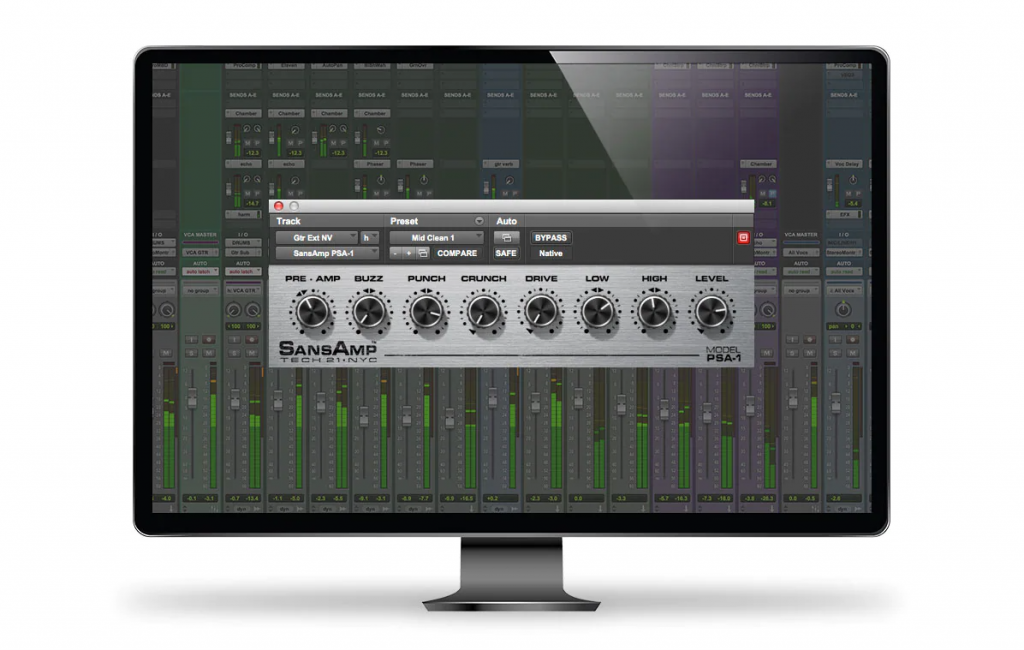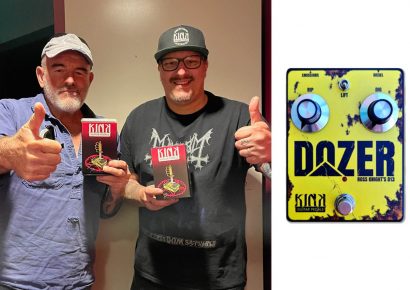Exploring the rich inner life of Joe Satriani
“It’s typical of me to think, ‘I bet all these problems we have as humans don’t mean anything to the spores,’” guitar virtuoso Joe Satriani says. “They’re down there at a much smaller level and they’re having the time of their life. It’s just about a party. And I figured if you were a human shrunk down and you were looking at a spore and it was giant, you’d be frightened, but slowly you’d realise they’re having a party, and it becomes this sort of romantic, crazy, psychedelic happening.”
Read up on all the latest interviews, features and columns here.
Joe’s not talking about an acid flashback or flying in a blue dream. He’s describing ‘Dance Of The Spores’, a track on his new album The Elephants Of Mars and its abstract inspiration. This isn’t something new for Joe. He seems to be one of those always-on creative people, someone who is sketching or designing cool guitar concepts when he’s not busy writing melodic and often terrifying guitar music. It’s a genre often accused of being coldly-technical, but Joe infuses his writing with concepts and ideas. And some of those ideas are as Not of This Earth as his debut album of the same name.
Take for instance ‘Sailing The Seas of Ganymede’. It started because Joe was booked to play on the Tonight Show with Jimmy Fallon in New York City. “It’s in New York City, Rockefeller Center, national television, and you go there in the early afternoon to rehearse with the band and you’re led into the teeny room. And the band – The Roots, this big band of super creative musical monsters – are all cramped into this room that is too small for them, period. And Questlove is in a smaller booth within the room. And I just remember thinking, ‘This is ridiculous. This gentleman needs an auditorium!’
“Then when I was flying home from New York City I thought, ‘where, where should he be? Where should Questlove really be?’ And I thought he should be commanding his own gigantic ship, sailing some exotic ocean, commanding these cresting 200-foot waves, not knowing where he is going, looking for adventure.”
“After writing the song, Satriani realised the title of the song should reflect where exactly he had put Questlove in the solar system. ‘So I decided that he should be in the subterranean oceans of Ganymede,” he laughs.
There’s more. Opening track and first single ‘Sahara’, for instance. “That was something that I was feeling about somebody being truly lost, and I kind of developed a film in my head and then wrote the music to the film. The song ‘Faceless’ came to me as I was realising that out in the neighbourhood, walking around everyone with masks and everything, we were becoming faceless, even people that knew each other wouldn’t say hello on the street, everyone was protecting themselves to protect each other, and I started thinking how that would relate to how we are as human beings. Every single song had some kind of interesting story that was different from the next.”
So clearly Joe has never been one to decide, ‘I need to write a shuffle in G.’ “I can’t do that! I’ve never been able to sit down and say, okay, 16 bars of this, eight bars of that, make sure you hit the chorus at 45 seconds, no more than 20 notes for the solo. Does the chorus modulate?’ I know I can recite it, but once I start, I feel so depressed that I stop and I go, ‘No, I’m only gonna write what’s what I’m interested in from an emotional point of view.’”
For a player known for owning a stable of great amps, Satriani used a surprising sound source on the record: the official AVID/Tech 21 SansAmp PSA-1 plugin model. Especially surprising because he has his own signature amp modelling suite in IK Multimedia’s AmpliTube platform, designed to replicate particular Satriani sounds and rigs from his back catalogue.
“I felt really bad at the end of the project,” he says. “I called the artist relations guy in New York who I’ve known for many years, and said, ‘I’m really sorry but I need to tell people the truth, I’m not gonna lie to them and tell them I used this product when I didn’t. So I was fine with them telling me to take a long walk off short pier. But they were totally cool with it because the way they saw it was, ‘We want you to stay with the company. This product really does represent your legacy and it makes sense that you move forward and you use whatever you want.’”

But that SansAmp modeller proved to be the superstar of the sessions. “What a surprise, because I thought I’d be using all those amps to reamp the tracks the way we’ve done for every record. But what surprised us is song after song, whether the guitar sound was super clean or halfway or super distorted, that SansAmp brought more of my personality into the speakers than any of the other plugins or really expensive modelling suites that we tried, which really just sounded like other people. And it was pretty shocking and we certainly wanted the most original tones possible. And by that I mean we needed to get the sound of my fingertips on the strings to come out, because the songs were original songs. We weren’t redoing blues classics or anything like that. So we needed that original personal touch, that real personality to come out. And that old plugin by AVID just seemed to do it.”
Up next for Joe is a whole bunch of touring (no word yet on Aussie dates but he’s a frequent visitor), and his newest Ibanez JS signature guitar, a 35th Anniversary model in an all-gold, mirror finish. “It’s basically a chrome guitar except it’s completely gold, a shiny golden piece of wonderful JS. It’s got two DiMarzio Satch Tracks and a humbucking pickup, so it looks like a single-single-humbucker arrangement. It’s got these cool little mini switches for each pickup so you can get about 10 or 12 different combinations of sounds. It’s a really cool guitar!”

Other instruments used on the album included a Paisley-finished JS model, an older alder one and a red basswood model, along with a natural-finished mahogany 7-string prototype that has been around for years. You’ll also hear a Jerry Jones Sitar and hybrid 12-string featuring an Ibanez body and the neck from a ’66 Fender electric 12-string, and a few acoustics including a Martin and an Ibanez JSA. But if you’re expecting a new Satriani amp or pedal, don’t hold your breath.
“I made a conscious decision not to get into doing any other products,” he says. “I got kind of fed up after a while of the experience of having the companies stop making them or changing the manufacturing specs without telling me, and the only company that’s always been, without fail, always straight up with me, is Ibanez, so we keep going.”
Listen to The Elephants of Mars now.







